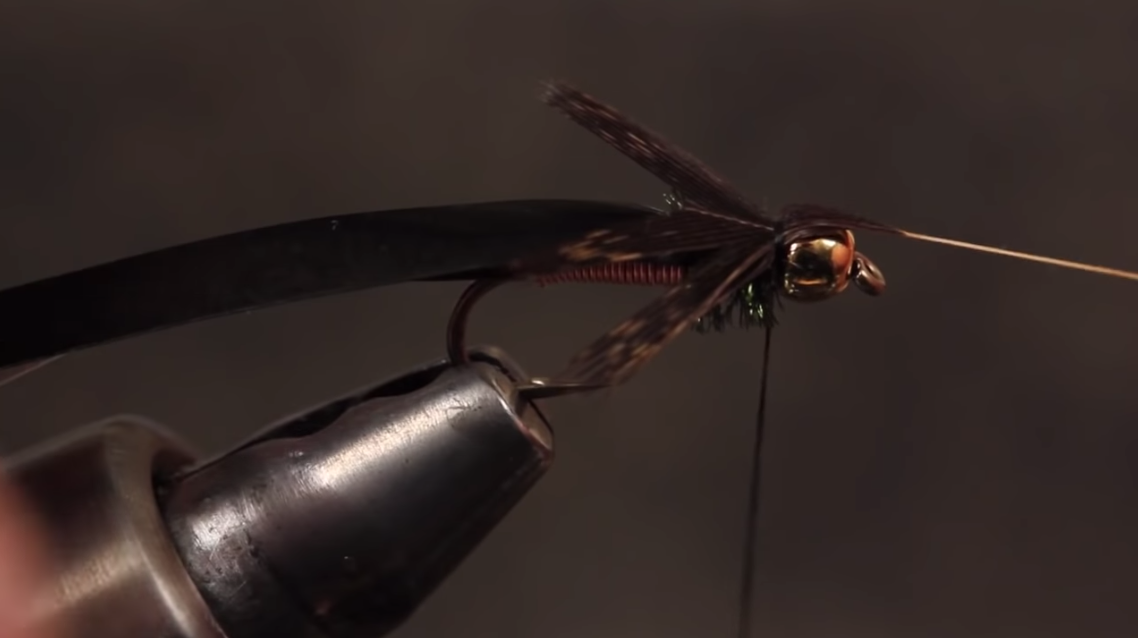The TU-Loon Outdoors Spring Fly Showdown is in its final week, and the tournament is down to its final eight flies.
Not surprisingly, given that most of us learn to fly fish for trout before we branch off and try to tackle other species, like bass and pike, or saltwater critters like bonefish and tarpon, the eight finalists in our first-ever showdown are largely considered trout flies.
Below, some of the best fly-tying experts demonstrate how to tie each of these great flies. The voting starts up again on Wednesday—be sure to stay tuned, and be sure to cast your votes to be eligible for some great fly-tying gear from Loon.
The Royal Wulff
This is one of America’s great attractor patterns, and its use of peacock herl, shiny floss and calf-tail wings give it a distinct appearance. The Legendary Charlie Craven shows you how to tie it.
The Elk-hair Caddis
A great imitation for an adult caddis, the Elk-hair Caddis is among the first dry flies anglers learn to tie, simply because caddis hatches are common and can be prolific. Here’s a hint: while caddis flies are an important part of a trout’s diet, healthy adult caddis are often ignored by big trout. Learn this pattern, but learn others that depict these flies in their emerging stages or flies that imitate “crippled” caddis. Below, renowned tier Kelly Galloup shows you how to tie a great caddis pattern.
The Prince Nymph
I like to consider the Prince the nymph version of the Royal Wulff, and no, not because they both use peacock herl. Rather, this is a subsurface bug that doesn’t imitate any one aquatic insect, but incorporates features from several different bugs. It’s a classic attractor.
The RS2
The RS2, first tied by Colorado fly-tier Rim Chung, is one of the great emerger patterns that has a knack of appealing to large, finicky trout, particularly during hatches where there are so many natural bugs on the water that it’s hard to bring trout to artificial flies. This is a must for anglers who love to fish early- and late-season Blue-winged Olive hatches or any mayfly prolific mayfly hatch.
The Copper John
First tied by Colorado’s John Barr, the Copper John is a seriously impactful nymph pattern that gets deep and appeals to a lot of trout. Tied with copper wire, it has a nice little shine, even in turbid water. I like to use this as the trailing fly in a double-nymph setup. Tim Flagler shows us a great Copper John pattern below.
The Adams
If there is truly a “top seed” among trout fly patterns, the Adams is likely it. First tied in 1922 as a general mayfly imitation for Michigan trout streams, the Adams and its many variants is still among the most-fished dry flies on the planet. A fly box without at last a handful of Adams in it is simply incomplete.
The Woolly Bugger
This is perhaps the easiest of the final eight flies to tie, and, even after all these years, it’s still one of the most effective streamers ever crafted at the vise. It imitates anything from a leech to a sculpin or a small baitfish, and anglers have taken to tying it in lots of different colors.
The Pheasant-tail Nymph
A renowned attractor on par with the Prince and the Copper John, this classic subsurface pattern is an excellent searching pattern for trout. Tied with weight, it gets deep. Tied without, it drifts well, with the fibers of the pheasant tail giving a subtle but sometimes irresistible action.
Voting resumes Wednesday, April 1. Be sure cast your vote to be eligible to win fly-tying gear from Loon ranging from superior-quality scissors, vice pawns, bobbins and the like. Those voting in the final matchup will be eligible to win a Loon Complete Fly-tying Kit.



